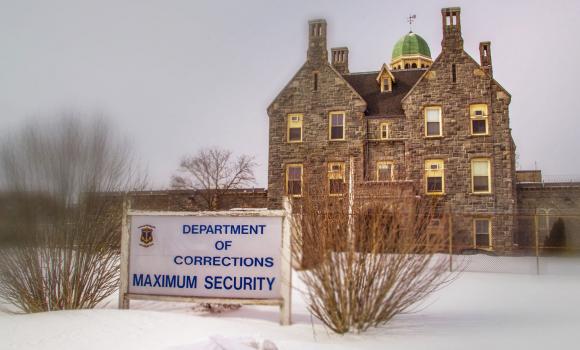PROVIDENCE, R.I. [Brown University] — A new study finds that effective new hepatitis C drugs are so expensive the state of Rhode Island would have to spend almost twice its entire prison health budget to treat all its chronically infected inmates. Even providing the medicine only to the very sickest inmates who will remain in custody for at least another year would exceed the state prison system’s pharmacy budget more than five times over.
The budget impact analysis, published online in the Journal of Urban Health, provides detailed new evidence of the “sticker shock” that states face in battling an epidemic that affects millions of people nationwide. The prevalence of the liver disease, which is often spread via injection drug use, is especially high in prisons. Meanwhile, the U.S. Supreme Court has obliged prison systems to provide inmates with care comparable to what is available in the community.
“The big problem is, even if you just take the most advanced disease, you can’t afford it with the current correctional budget,” said Dr. Brian Montague, assistant professor medicine and public health at Brown University and a physician in the Division of Infectious Diseases at The Miriam Hospital, who led the study. “There was an option to defer treatment before because the [prior] treatments were significantly more toxic and the risks often outweighed the benefits. Now, with safe and highly effective treatments, morally and ethically there’s no option to not treat, particularly for those with more advanced disease.”
Prison prevalence
John T. Nguyen, formerly a graduate student in public health at Brown, conducted the detailed analysis of prison health records, arriving at the estimate that 17 percent of the 3,227 inmates held by the state in February 2014 were chronically infected with the hepatitis C virus (HCV). That figure is consistent with published estimates of the prevalence in other state prison systems, Montague said.
The research team, including Dr. Fred Vohr, medical director of the Department of Corrections, was able to further estimate the progression of the illness and the pervasiveness of the different strains — genotypes — of HCV among the state’s prisoners. Those considerations determine what kind of treatment is needed and how urgently.
For example, the study estimates that 82 inmates are likely to have genotype 1 of HCV and more advanced scarring of the liver, stage three or four fibrosis. Standard of care for that condition is a combination of the drugs sofosbuvir and ledipasvir for 12 to 24 weeks or a comparable regimen. Such a regimen costs between $94,500 and $189,000.
That high cost is still much cheaper than a liver transplant or managing the other complications of end-stage liver disease. “The cost-effectiveness of these treatments has been well-established based on preventing the development of cirrhosis and its complications,” Montague said. “For patients who have stage three or four fibrosis, we know you save money by curing them.”
Budget buster
But the analysis shows that the prisons don’t have the budget to pay for the medicines, even if they are cheaper than the alternative. In 2014, Rhode Island’s prison system budgeted $19.9 million for health overall, and $2.7 million for pharmaceuticals.
With specific estimates of the appropriate treatments for hundreds of sick inmates, the researchers added the total costs of different scenarios. The scenarios varied from treating everyone who was chronically infected, to treating only those with any liver damage, to treating only those with urgent, advanced disease. Nguyen, Montague, and the team also modeled limiting treatment to inmates based on the length of their remaining sentence and examined how costs would be affected by either significant increases or decreases in the price of medications.
At current drug prices the total cost of treating all infected inmates with at least six months of time to serve turned out to be about $34.2 million. Treating just the sickest ones cost about $15 million. Treating only the sickest inmates with at least a year before they return to the community would still have cost about $12 million.
The least expensive hypothetical — treating only sickest inmates with the help of a 50-percent discount on prices — still cost $8 million, about three times the system’s budget for drugs and more than 40 percent of the system’s total health budget.
‘Serious reevaluation’
Both in Rhode Island and in other states where the situation is likely comparable, change is necessary, Montague said. States could appropriate more money for correctional health, or move prisoners to Medicaid (although that system, too, is struggling to grapple with hepatitis C costs), or pharmaceutical companies must be willing to slash drug prices.
“The rising cost of therapy goes beyond merely a ‘sticker shock’ phenomenon and needs to be seriously reevaluated,” the author concluded in the journal. “Corrections have inherited an important public health opportunity to address the HCV epidemic. It is unrealistic, however, to expect correctional facilities to attempt widespread HCV treatment with the currently available budgets.”
In addition to Nguyen, Montague, and Vohr, the paper’s other authors are Dr. Josiah Rich and Bradley Brockmann of Brown and the Center for Prisoner Health and Human Rights at The Miriam Hospital; and Anne Spaulding of Emory University.
The National Institutes of Health supported the study.

